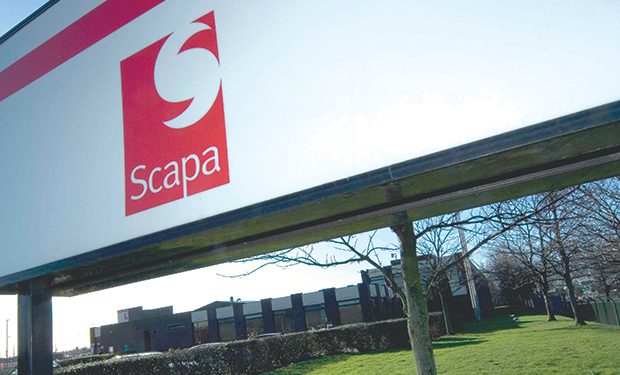
If you read nothing else, read this…
- It is not too late for employers to prepare for the new pension reforms.
- Employers must decide if and how they plan to support employees approaching retirement.
- Preparation is likely to involve tweaking existing strategies, rather than spending additional budget, for many employers.
1. Have I left it too late to prepare for the new pension reforms?
In a nutshell, no; employers have plenty of time to tweak their pensions strategies to incorporate the new pension reforms.
Jamie Jenkins, head of pensions strategy at pensions provider Standard Life, says: “Employees do not suddenly need to do things on 6 April just because the rules have changed. The freedoms become available forever more from 6 April.”
Rob Booth, head of proposition at Now:Pensions, adds: “There is no such thing as too late, because employers may look at their demographics and see that no-one is near retirement in the next three or four years.”
2. What level of responsibility do I want to take for retiring employees?
Employers must consider whether they want to simply inform their employees about their new retirement choices, or whether they also want to educate them about the possible implications of these choices and provide workplace support to help them make more knowledgeable decisions.
Booth says: “Employers may just want to wash their hands of [employees], or they might be a bit more paternalistic and want to ensure that they make the right choice.”
Mark Futcher, partner and head of defined contribution (DC) at pensions consultancy Barnett Waddingham, adds: “Employers must consider whether they want to help their employees through [the choices], or whether they see themselves as having helped employees build up a pot of money, and [then] it is down to them.”
3. How are employees likely to use the new pension freedoms?
Come April, employers will experience a whole range of approaches by their workforce to retirement, from some staff drawing down their entire pensions pots to others who will not touch their pots at all.
Futcher says: “Lots of [employers] are guessing at the moment how the freedoms might be used, and I think there is lots of agreement that if staff have less than £30,000 [in their pensions pot] they are going to take it as cash, and if they are very wealthy they are likely to not touch their pension plan at all.”
But it may also be the case that some employees consider their DC pension scheme the relatively more trivial aspect of their pension planning, and one that they can spend in the knowledge that they have a defined benefit (DB) pension scheme underpinning their income.
4. Does our pension scheme have a glide path structure that reflects employees’ likely choices?
Employers must ensure that their pension scheme’s glide path, its asset allocation strategy, is aligned to their employees’ retirement plans. This means, for example, that the scheme’s risk profile reflects, say, plans by the majority of the workforce to remain in work and contribute into their pension scheme into later life.
Booth says: “If the scheme is contract based, the pensions provider is going to come up with [a solution], but is the employer going to take [an] off-the-shelf [package] or design its own? If the scheme is trust based, [employers must consider whether the solution] has been redesigned appropriately.”
5. How can I manage multiple drawdowns?
Employers must consider whether to manage employees’ multiple drawdown requests in-house using their existing workplace pensions scheme, or whether they plan to rely on their pensions provider to manage the transactions for them.
Jenkins says: “Our experience is that the vast majority of employers have been asking their providers how they will help them to manage these.”
Employers would therefore be best placed to assess the likelihood of employees requesting multiple drawdowns, and then talking to their pensions provider about the possible support that they can provide to manage these requests.
6. Will employees be able to draw down just tax-free cash?
Employers need to prepare for employees that want to draw down just tax-free cash, or a mix of taxed and untaxed cash, from their pension pot.
Under the new pension rules, employees will be able to draw down up to 25% of their pension pot tax free as and when they choose, instead of in a single transaction, which the current rules require.
Standard Life’s Jenkins says: “Some pension schemes are just offering [a mix of taxed and untaxed cash drawdowns], so an employee wanting to just take the tax-free cash actually could not do so.”
Employers need to ascertain their pensions provider’s approach to employees’ drawdown requests.
7. How should I update my communications campaign to keep employees informed?
Employers with established pensions communications strategies may simply need to tweak their messages to incorporate the new pension reforms.
Futcher says: “It is not necessarily about employers increasing their spend on communication and engagement exercises, but about redirecting [their messages] at the most appropriate times.”
But Angus Jones, chief executive officer at wealth advisery firm Clarity, says: “Employers must also consider which communications are appropriate in light of employees’ total retirement savings.”
Employers should, for example, consider the most appropriate way to communicate with employees with single and very small pension pots for whom drawdown may by completely inappropriate.
Jenkins says: “Employers would want to probably communicate the benefits of [these employees] staying in their scheme and saving.”
Now:Pensions’ Booth adds: “There is no point in [employers] promoting flexible drawdown if employees only have £5,000 in their pot,” he adds.
8. How can we boost employees’ general financial awareness?
Employers that have identified gaps in employees’ pensions nous may consider offering staff workplace retirement planning support.
This could be in the form of online financial modelling tools, seminars and workshops and access to independent financial advice, which organisations must ensure is available at a reasonable cost to staff if they are not prepared to fund it.
Booth says: “If employers have a friendly independent financial adviser, perhaps looking after their pension scheme for them, they need to find out if they are going to charge big fees, or if there are fixed fees for employees accessing a conversation with them.”
9. This all sounds really complicated, so how will I cope?
Employers must consider their response to the new pensions rules in the context of their resources, as well as the extent to which their business strategy and corporate values actually require them to support staff in retirement.
Barnett Waddingham’s Futcher says: “It is not [employers’] responsibility to help staff access their money.”
Jones adds: “Employers have just got to provide tools [with which employees can make informed decisions], not all the answers.”
Employers should talk to their providers about the support that they can provide, if they have not done so already.
10. What support can my pensions provider offer?
Employers should ask their pensions providers which products and services they will offer come April, how they will offer these and whether there is any additional cost involved in doing so.
But organisations must accept that they may have to wait for this support.
Futcher says: “I don’t think providers have really finalised their propositions post April, so we have been telling our [employer] clients to wait and see what providers’ off-the-shelf solutions are going to be and [how they will] engage and communicate these to scheme members.”
It is only by identifying any gaps between these new solutions and the workplace support that employers already offer their staff that they can work out exactly what they need to be ready for the forthcoming changes.
Case study: Scapa Group questions employees’ financial nous ahead of the pensions changes

When Ruth Patten joined Scapa Group as group reward manager in June 2014, she had a barrage of questions about the pension schemes in place.
She was particularly keen to understand the level of financial awareness among employees at the global bonding product and adhesive components manufacturer.
“[I wanted to know] how much they really knew about pensions and how much of that is in the context of a wider financial savviness,” she says.
Patten found that most staff have a good understanding of when they want to retire, but had a limited understanding of their pension.
“We have a smart employee population, but they had less awareness around the pension than I would have hoped for,” she says.
“I think this comes from a culture of employers having always provided very little choice on DB schemes and everything pretty much happening for [staff, which means that] they have had many years of not having to think about an investment strategy,” she adds.
Consequently, Patten had to comsider, in conjunction with the organisation’s pensions consultancy Barnett Waddingham, how best to communicate to staff, and the most appropriate messages to use.
Scapa, which operates a group personal pension scheme, provided by Zurich, and a closed DB scheme, has a workforce with a vast mix of employees including a high proportion aged over 50, a large proportion in highly skilled roles that sit within manufacturing and production and a lot of long-serving employees, as well as employees that do not have a personal email account.
Patten says: “We have started to understand where the gaps [in understanding] are, where we need to put more explanation in and where to segment communications.”